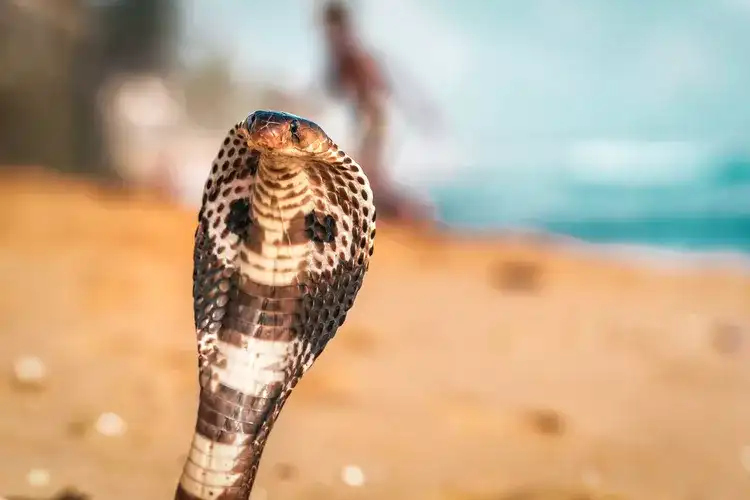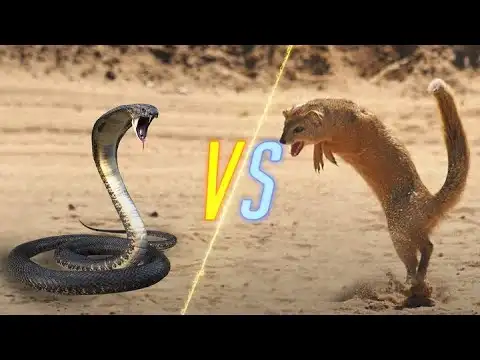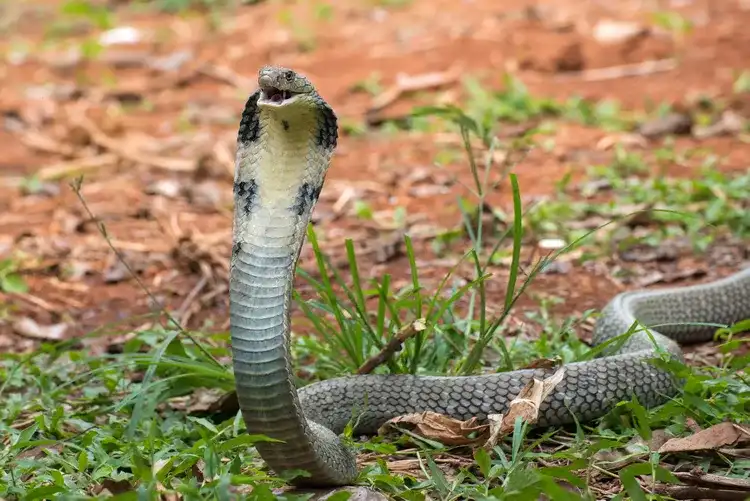The king cobra reigns supreme among snakes not just in size, but also in power, behavior, and survival strategies. Native to the dense forests and marshes of Southeast Asia, this formidable reptile holds a place of awe and mystery in both science and legend. Below, we explore eight compelling facts that shine a light on what makes the king cobra a truly unique species.
1. The Longest Venomous Snake in the World
Among all venomous snakes, none surpass the king cobra in length. Adults typically grow between 10 and 12 feet, but some can reach up to 18 feet a length unmatched by any other venomous species. While not the heaviest, the king cobra’s elongated body and imposing stance make it a force to be reckoned with in the wild.
2. The ‘Hood’ Is Made of Ribs
When threatened, the king cobra fans out its hood a signature trait. This dramatic display is created by elongated ribs beneath the skin that spread outward when the snake feels the need to defend itself. Combined with a loud hiss and elevated posture, the hood amplifies the snake’s already intimidating appearance.
3. Neurotoxic Venom That Paralyzes
King cobras deliver a neurotoxic venom, meaning it attacks the nervous system. While the amount of venom they release in a single bite is relatively small, it is potent enough to paralyze or kill prey and potentially a human within minutes. In extreme cases, even large animals such as elephants have succumbed to their venom within a few hours.

4. They Are Snake-Eaters
Unlike many other reptiles, king cobras are ophiophagous they feed primarily on other snakes. They will occasionally eat rodents or birds, but their main diet consists of venomous and nonvenomous snakes alike. They have specialized digestive systems that allow them to safely break down toxins from their prey, and they can go months without eating after a large meal.
5. The Only Nest-Building Snake
Among all snake species, the king cobra is the only one known to build a nest. In preparation for laying her clutch often up to 50 eggs the female constructs a mound using leaves and debris. She fiercely guards the nest until the eggs hatch, after which the hatchlings must fend for themselves from day one.
6. The Mongoose Is Their Most Formidable Foe
Despite being a top predator, the king cobra does have a natural enemy the mongoose. Although much smaller in size, this agile mammal has a natural resistance to snake venom and can outmaneuver the cobra during an attack. While mongoose-cobra confrontations are rare, they are among the few animals that pose a real threat to this snake.

7. Defense Through Sound and Movement
When cornered, king cobras use a combination of tactics to ward off danger. Aside from rising up and displaying their hood, they also produce a unique low-frequency growl, unlike the high-pitched hiss of many snakes. This eerie sound is made by slowly exhaling through the windpipe and serves as a clear warning to would-be predators.
8. Impressive Longevity in the Wild
King cobras can live over 20 years in the wild. Their ability to survive long periods without food, coupled with a lack of natural predators, makes them remarkably resilient. However, human activities particularly habitat destruction and poaching pose growing threats to their survival.
How You Can Help Protect King Cobras
Despite their fearsome reputation, king cobras are listed as a vulnerable species by the IUCN. Their survival depends largely on human action and awareness.

Simple Steps Toward Conservation
- Support conservation organizations: Donate to groups like the King Cobra Conservancy or Save the Snakes.
- Avoid products made from snakeskin: Fashion items such as bags and shoes often contribute to the illegal wildlife trade.
- Restore natural habitats: Help by reducing chemical usage, cleaning up green spaces, and planting native vegetation.
The king cobra is a symbol of wild majesty and natural balance. By learning more about these remarkable reptiles and taking steps to protect them, we contribute to the broader mission of preserving biodiversity on our planet.





